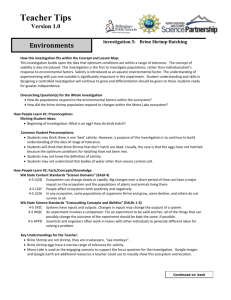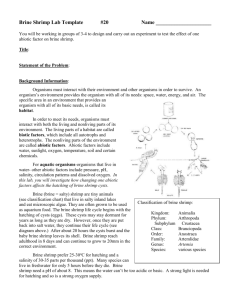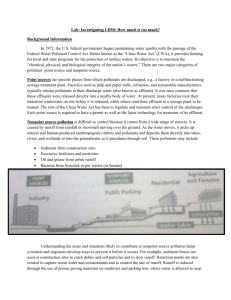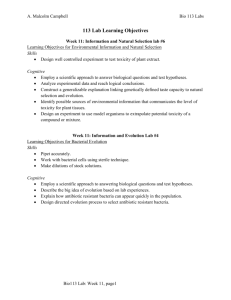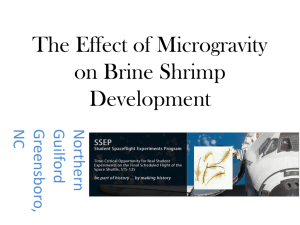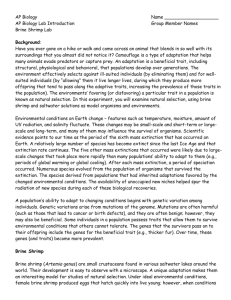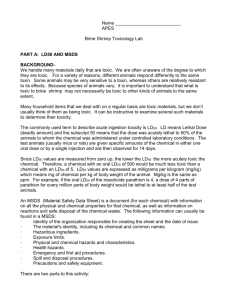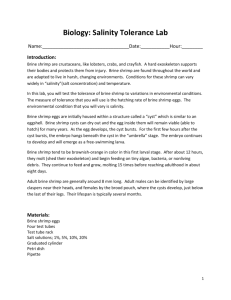pg. Name: Investigation 4 “Brine Shrimp Hatching” Study Guide
advertisement
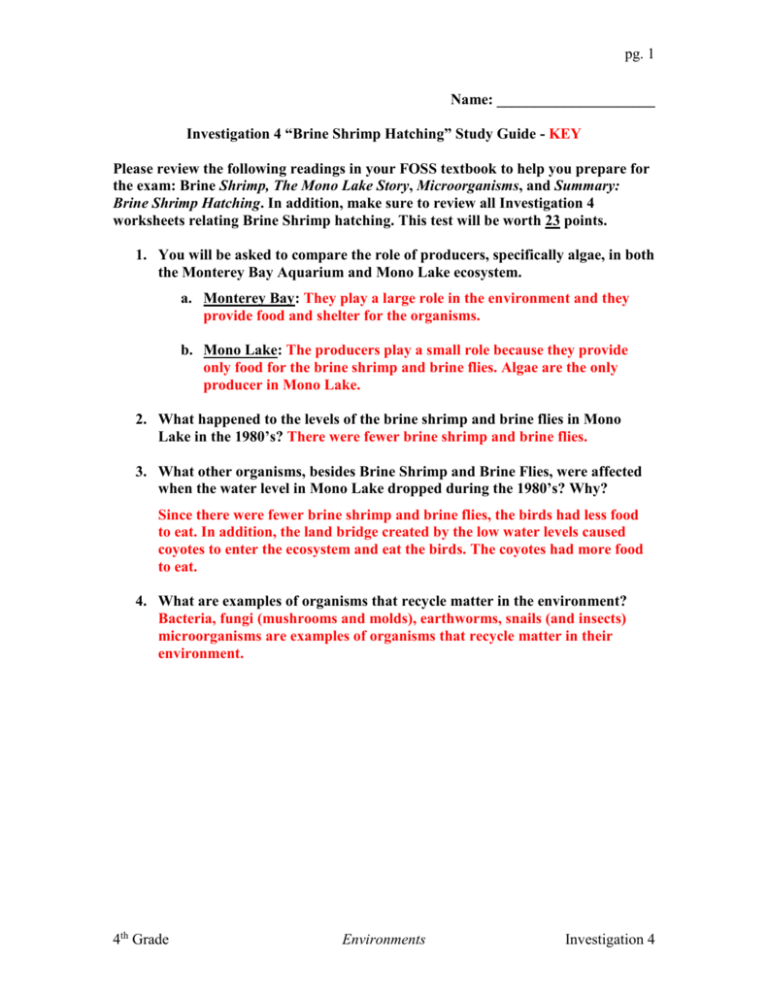
pg. 1 Name: _____________________ Investigation 4 “Brine Shrimp Hatching” Study Guide - KEY Please review the following readings in your FOSS textbook to help you prepare for the exam: Brine Shrimp, The Mono Lake Story, Microorganisms, and Summary: Brine Shrimp Hatching. In addition, make sure to review all Investigation 4 worksheets relating Brine Shrimp hatching. This test will be worth 23 points. 1. You will be asked to compare the role of producers, specifically algae, in both the Monterey Bay Aquarium and Mono Lake ecosystem. a. Monterey Bay: They play a large role in the environment and they provide food and shelter for the organisms. b. Mono Lake: The producers play a small role because they provide only food for the brine shrimp and brine flies. Algae are the only producer in Mono Lake. 2. What happened to the levels of the brine shrimp and brine flies in Mono Lake in the 1980’s? There were fewer brine shrimp and brine flies. 3. What other organisms, besides Brine Shrimp and Brine Flies, were affected when the water level in Mono Lake dropped during the 1980’s? Why? Since there were fewer brine shrimp and brine flies, the birds had less food to eat. In addition, the land bridge created by the low water levels caused coyotes to enter the ecosystem and eat the birds. The coyotes had more food to eat. 4. What are examples of organisms that recycle matter in the environment? Bacteria, fungi (mushrooms and molds), earthworms, snails (and insects) microorganisms are examples of organisms that recycle matter in their environment. 4th Grade Environments Investigation 4 pg. 2 Estimated Number of Brine Shrimp Hatched 5. You will be provided with a graph showing the results of a student’s Brine 0 1 2 3 4 5 6 7 Number of 1-ml spoons of salt Shrimp hatching experiment under a range of salty conditions. You will be asked to analyze the graph to determine the following information: a. What is the optimum (best) number of 1-ml spoons of salt for hatching Brine Shrimp? 4 ml b. What is the Brine Shrimp’s range of tolerance? 1-6 ml c. Describe how you can find out of there were any viable Brine Shrimp that could still hatch in the experiment. Place the unhatched shrimp in the cup with the optimal level of salt to see if more brine shrimp hatch. 6. Why are decomposers important in an ecosystem? What would happen if we did not have decomposers in our ecosystem? Decomposers are important to our ecosystem because the raw materials that the decomposers consume would not be recycled back to the Earth and they would eventually cover the Earth. 7. Are all bacteria bad? Why or why not? Explain. 4th Grade Environments Investigation 4

